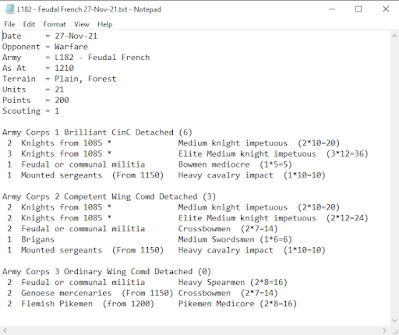Hasty Attack
Divisional HQ has brought forward the time of the attack
forward by 24hrs. The troops earmarked for the attack are currently still in
their assembly areas some way from the forming up point.
Set Up
Both players roll the dice the higher score decides whether
to attack or defend, the lower dice chooses his table edge.
Attacker rolls for each unit in his force, on a die roll of 1-3
they arrive on GT 1, on a die roll of 4-6 they arrive as reserves from GT2. GT
1 attacking troops do not need an order check, all units from GT 2 onwards do
need to take an order check as per the rules. If a unit capable of being
deployed forward arrives on GT 1 it can be pre-deployed up to 18 inches in from
the attacker’s table edge. Troops that can be forward deployed that are
scheduled for arrival from GT 2 can be deployed forward and exchanged for a GT
1 arrival unit on a further successful die roll of 2-6.
Defender is allowed 50% of his force deployed forward
on-board. The 50% includes any troops that can be pre-deployed forward. Troops
deployed (less pre-deployed forward units) set up within 18” of the player’s
table edge. Remaining troops arrive from GT 1 with an order check as defined in
the rules.
The attacker places an objective within 18 inches of the
defender’s table edge.
The defender places an objective within 18 inches of the
attacker’s table edge.
A third objective is placed on a terrain feature within 12
inches of the tables centre line. On a die roll of 1-2, it is in the left third
of the table, 3-4 in the centre third, and 5-6 on the right third.
Mission Objectives
The objective is to secure as many objectives as possible while
destroying more of the enemy than you suffer.
First Turn
Prior to the arrival of the first troops the attacker rolls
to determine if he has a preliminary bombardment. This arrives on a die roll of
4-6. An attacker’s special bombardment rule does not apply.
Units arriving on GT 1 or later must arrive on their own
table edge. The defender’s forces that arrive on GT 1 or later do so with an
order check. The attacker’s forces on GT 1 do not need an order check, but they
do need an order check from GT 2 onwards.
Game Duration
A standard 6 turn game, with a possible 7th turn
on a dice roll of 4-6.
Victory
Victory is measured by which side scores the most points:
- 1 pt per enemy unit destroyed
- 1 pt for holding the objective in the attacker’s half of the table
- 2 pt for holding the objective astride the table centre line
- 3 pt for holding the objective in the enemy’s half of the table.

































